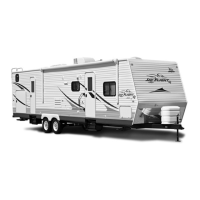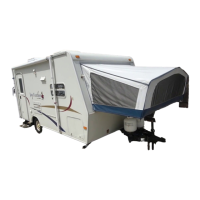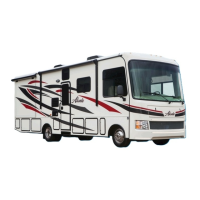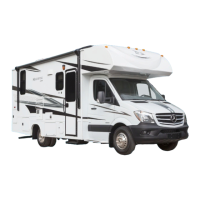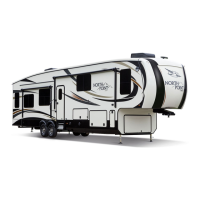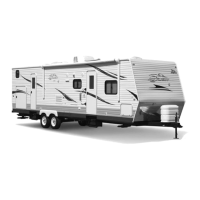TOWING
You will find that your RV will travel safely and comfortably at most posted trailer
highway speed limits. However, it will take longer than a passenger automobile to reach
that speed. Keep this in mind when overtaking and passing another vehicle.
Allow more time to go around the vehicle you are passing.
You cannot cut back into the traffic lane as quickly due to the longer length of your tow
vehicle/RV combination. Drive with caution to avoid situations that might require quick
momentum changes.
Even though your RV is equipped with brakes designed for GVWR, we suggest practicing
stopping away from traffic until you become accustomed to your RV’s stopping distance.
A good way to practice is at a large parking lot (where it is permissible). Easing to a stop
and starting smoothly saves wear and tear on your tow vehicle/RV combination.
Be aware of road surface conditions. Slow down well in advance of dips and bumps to
reduce the jolting to your tow vehicle/RV combination. Drive over them slowly and let the
trailer tires pass over them before accelerating. Cross railroad tracks slowly (always
release your brakes before crossing).
Adverse weather conditions and extremes in terrain may affect the performance and
handling of your tow vehicle. Do not operate the tow vehicle cruise control on icy or
extremely wet roads, winding roads, in heavy traffic or in any other traffic situation where
a constant speed cannot be maintained.
When descending a long hill, drop down into a lower gear (or lower range if you have
automatic transmission). Avoid conditions that require excessive and prolonged use of
your brakes. Apply and release brakes at short intervals to give them a chance to cool. The
tow vehicle transmission and engine will help in controlling downhill speed and can
lengthen brake life. The distance required to stop the RV is greater than an automobile’s.
Use care when accelerating or decelerating on a slippery surface. Abrupt speed changes
can cause skidding and loss of control.
Driving through water deep enough to wet the brakes may affect stopping distance or
cause the vehicle to pull to one side. Check the RV’s brake operation in a safe area to be
sure they have not been affected. Never operate any vehicle if a difference in braking
efficiency is noticeable.
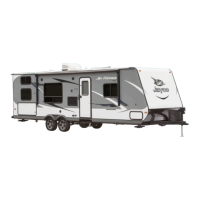
